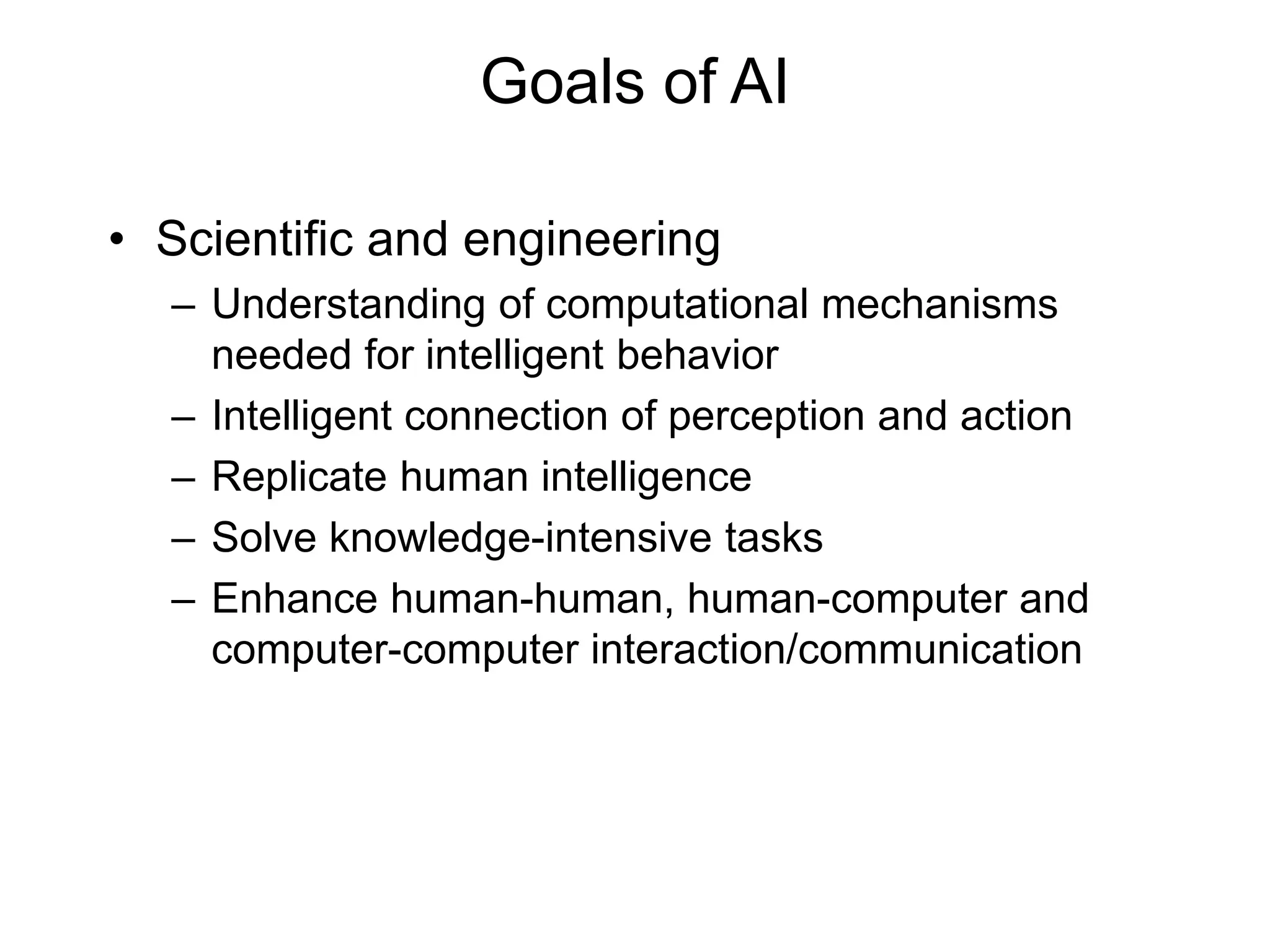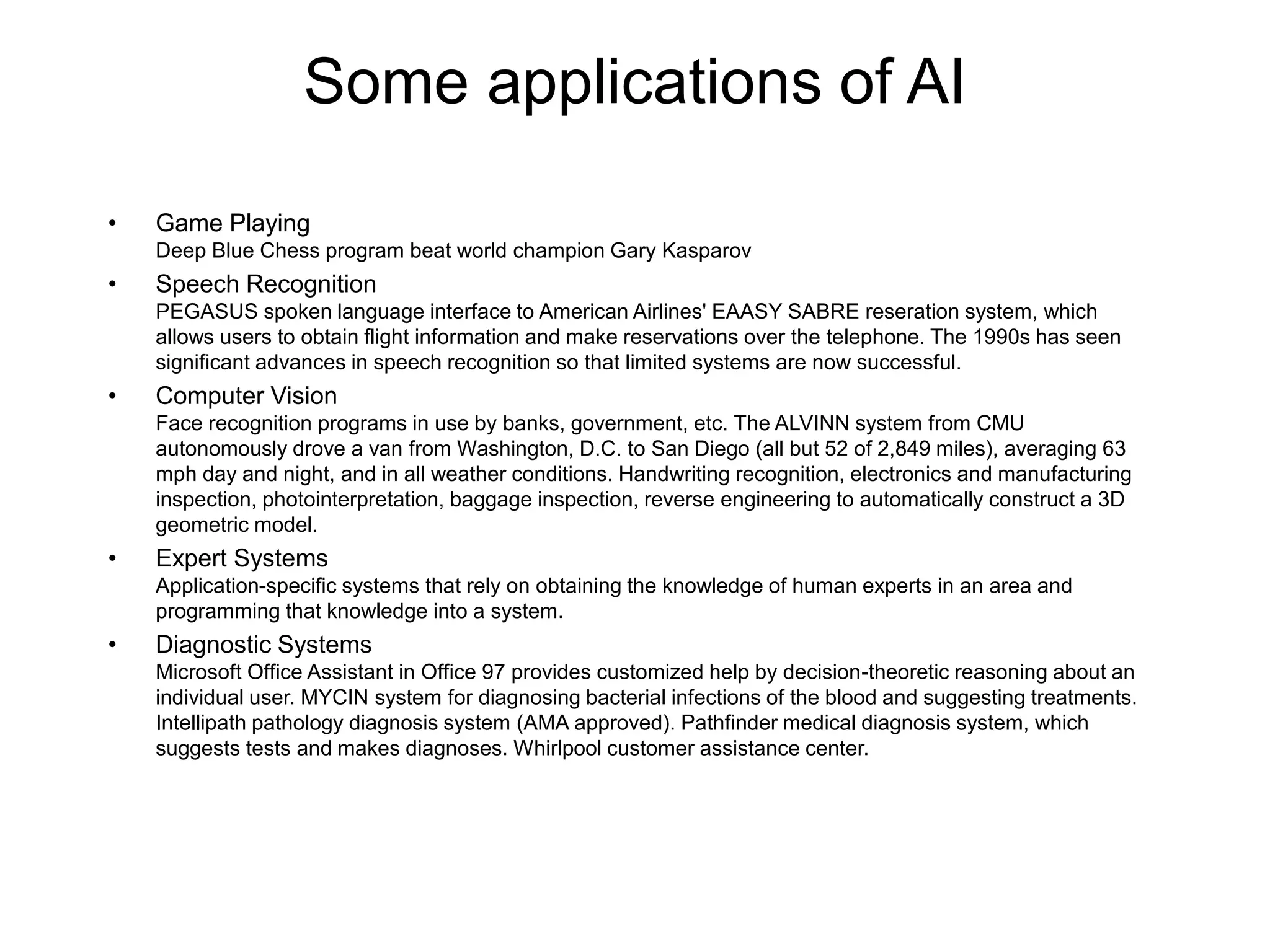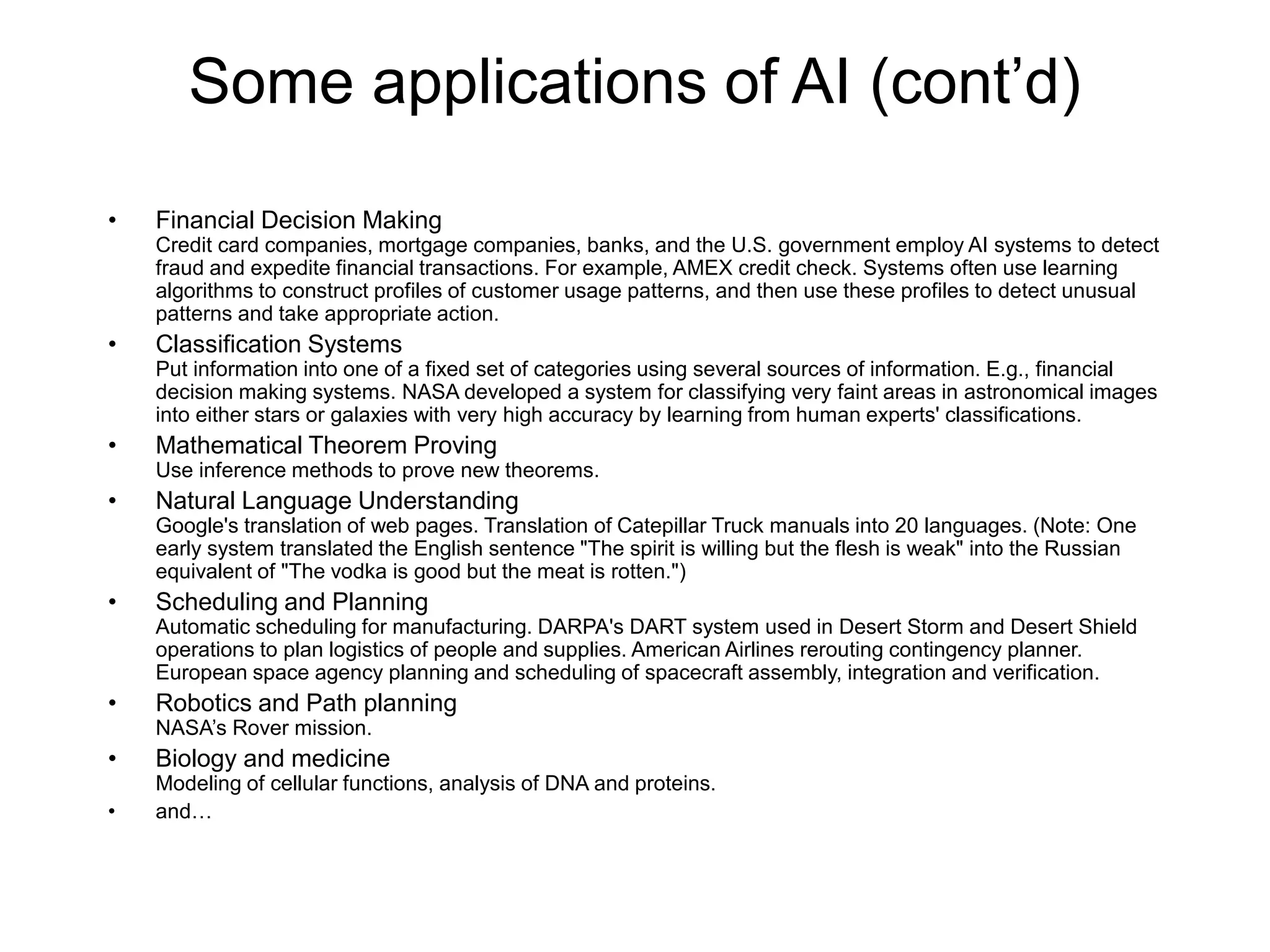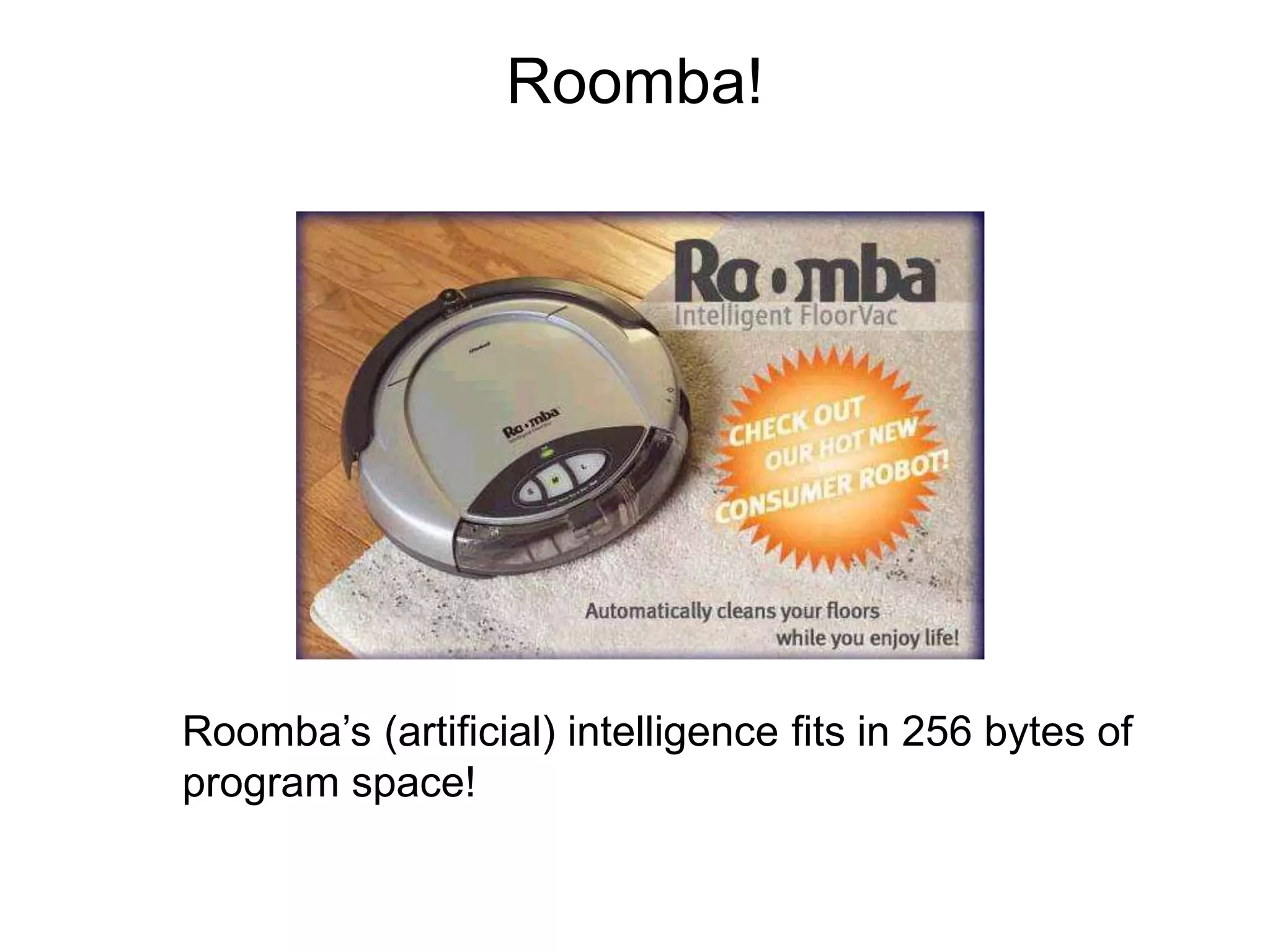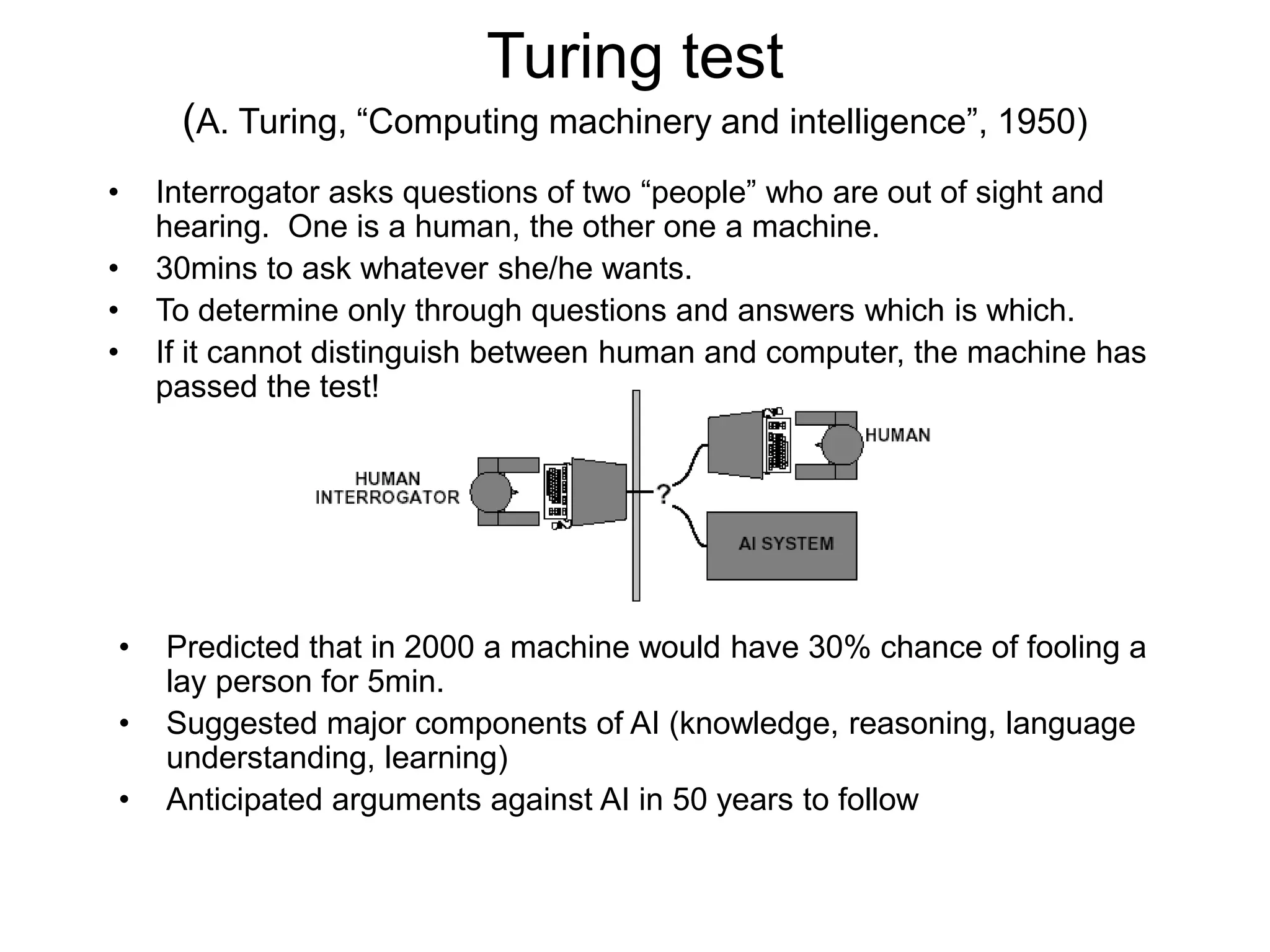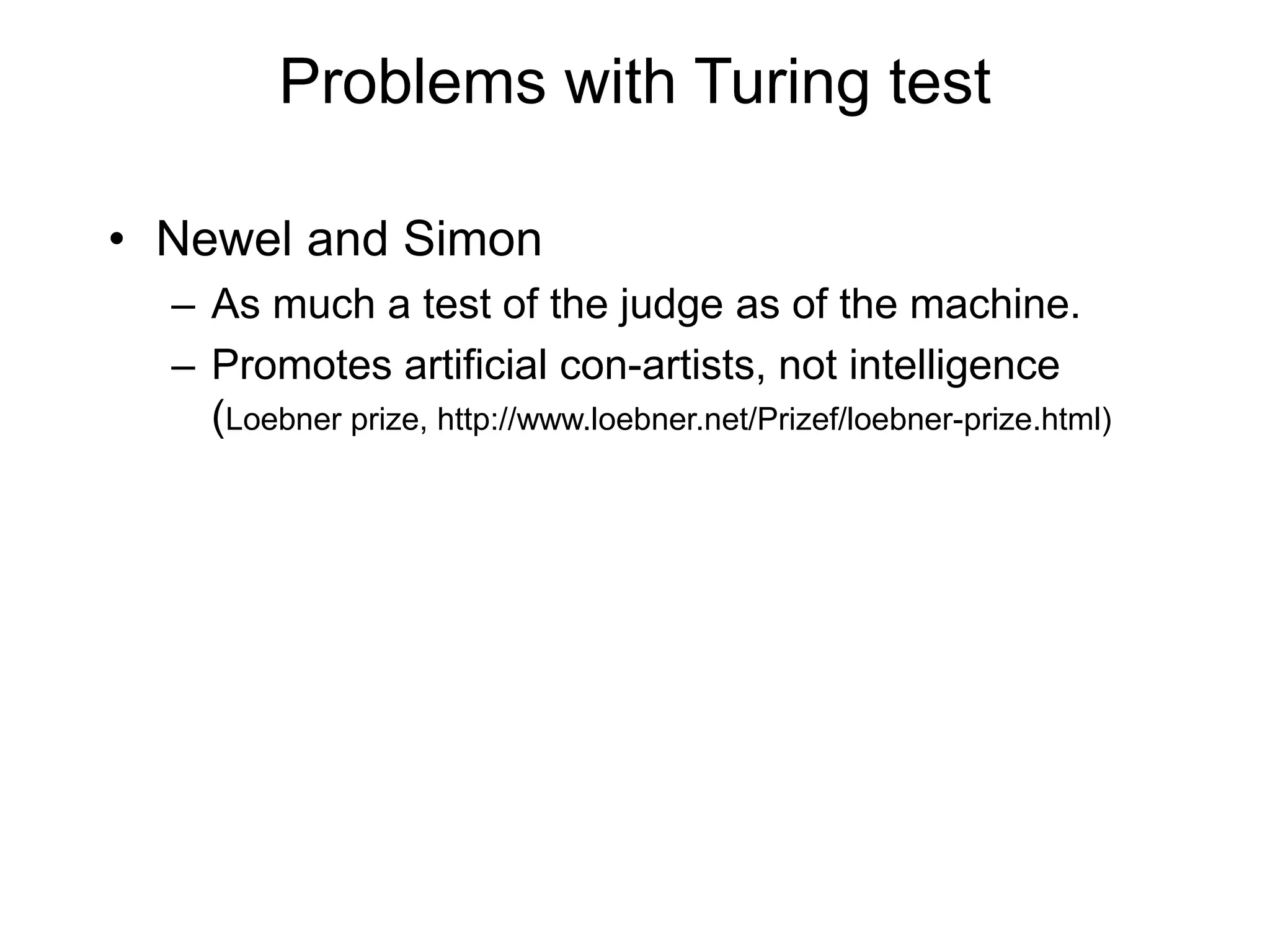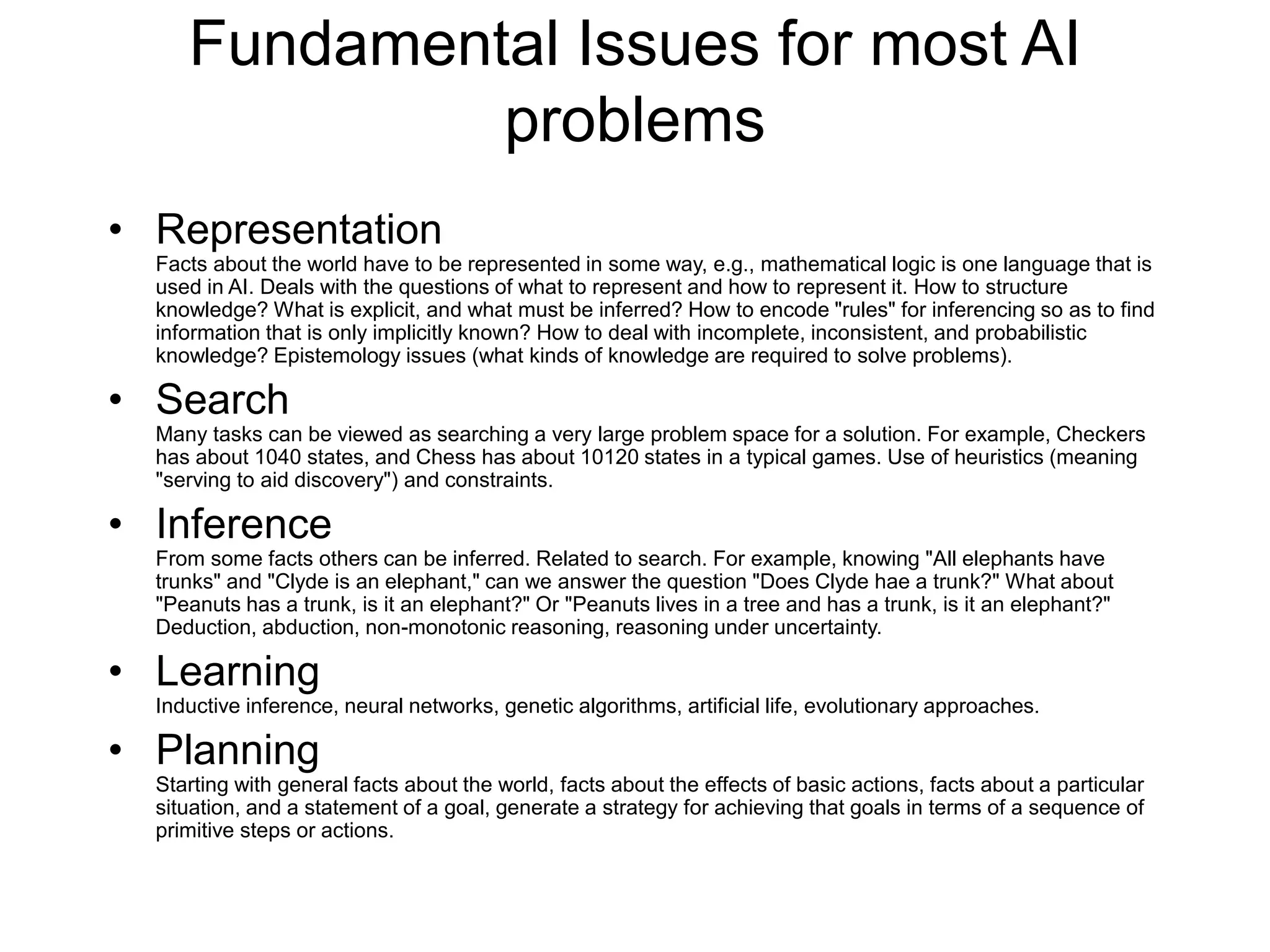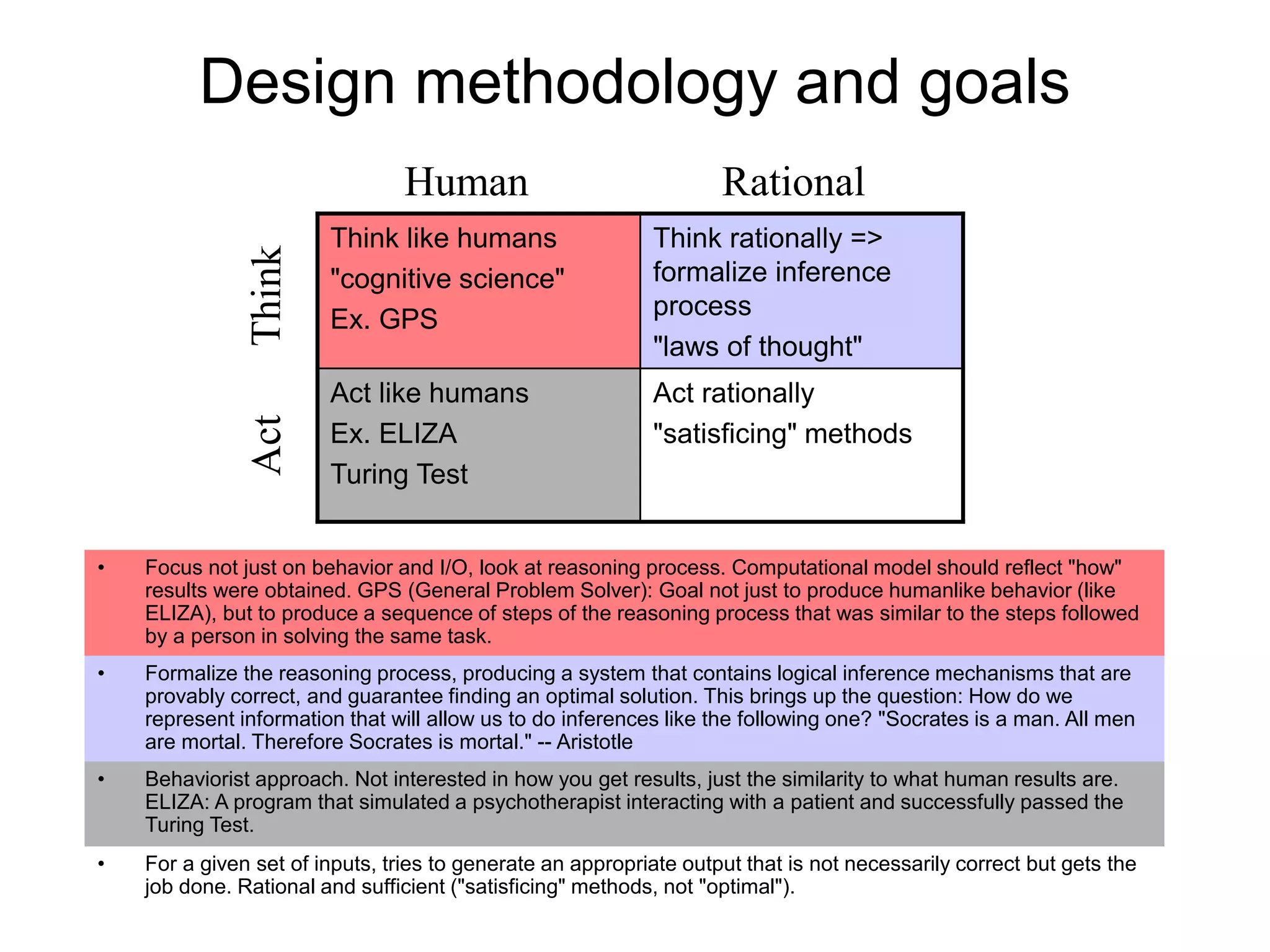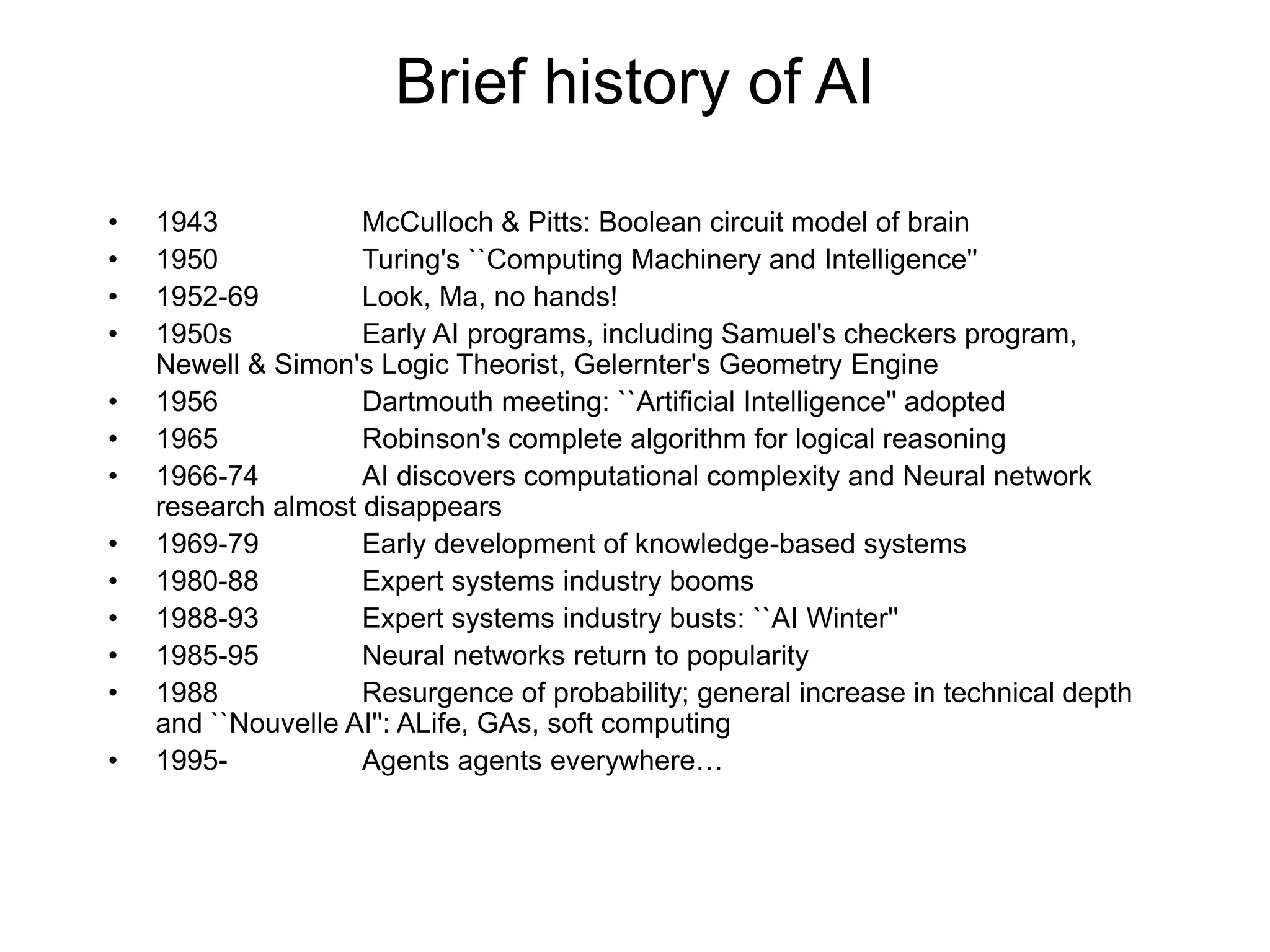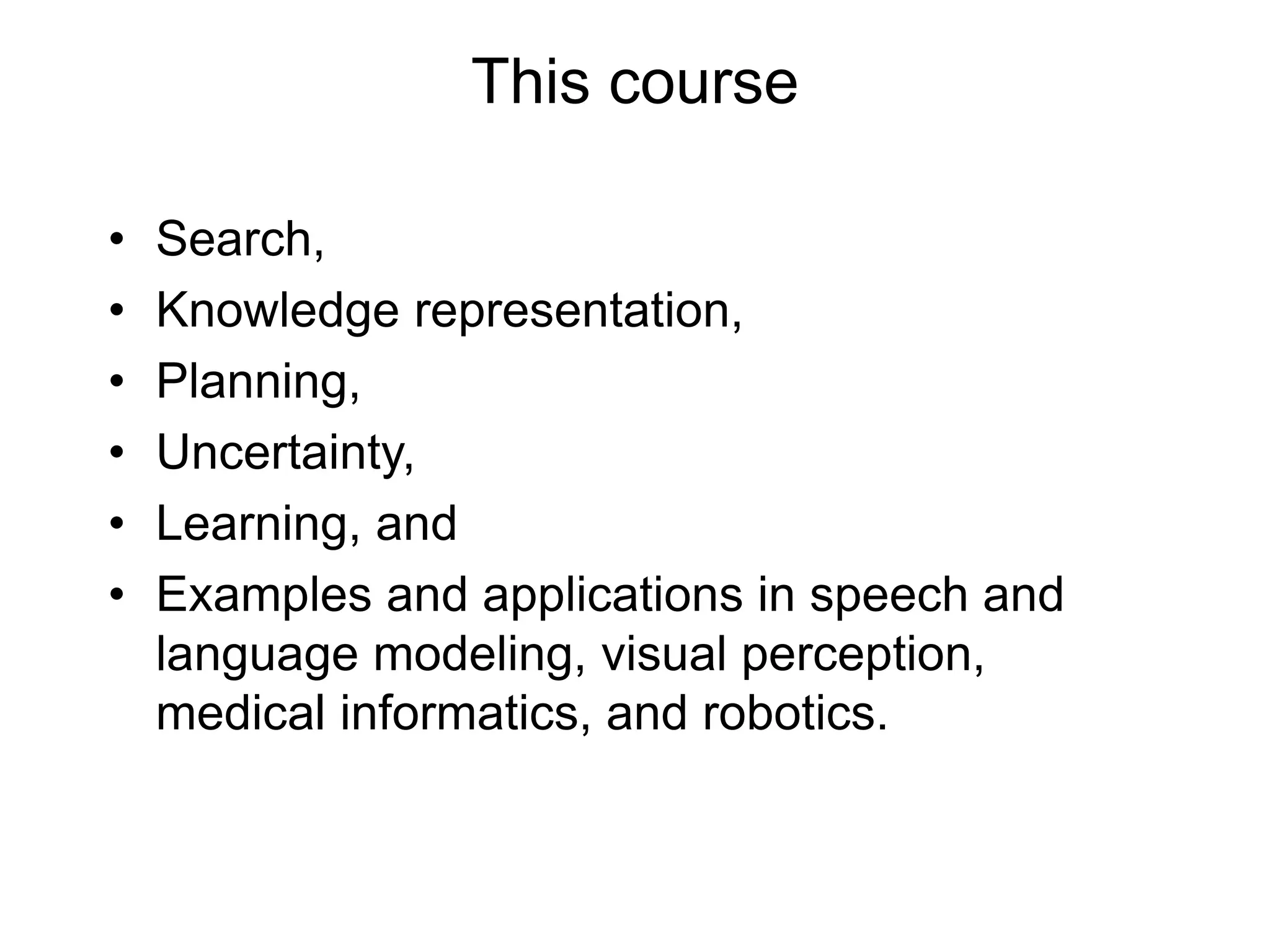This document provides an overview of an introduction to artificial intelligence course. It discusses course administration details like the instructor, TAs, meeting times, grading, and textbook. It then covers topics that will be discussed in the course like what AI is, the ingredients of intelligence, history of AI, applications of AI, and goals of AI. Key problems in AI like representation, search, inference, learning, and planning are also summarized. Different design methodologies like thinking rationally to formalize inference and thinking like humans from a cognitive science perspective are contrasted.
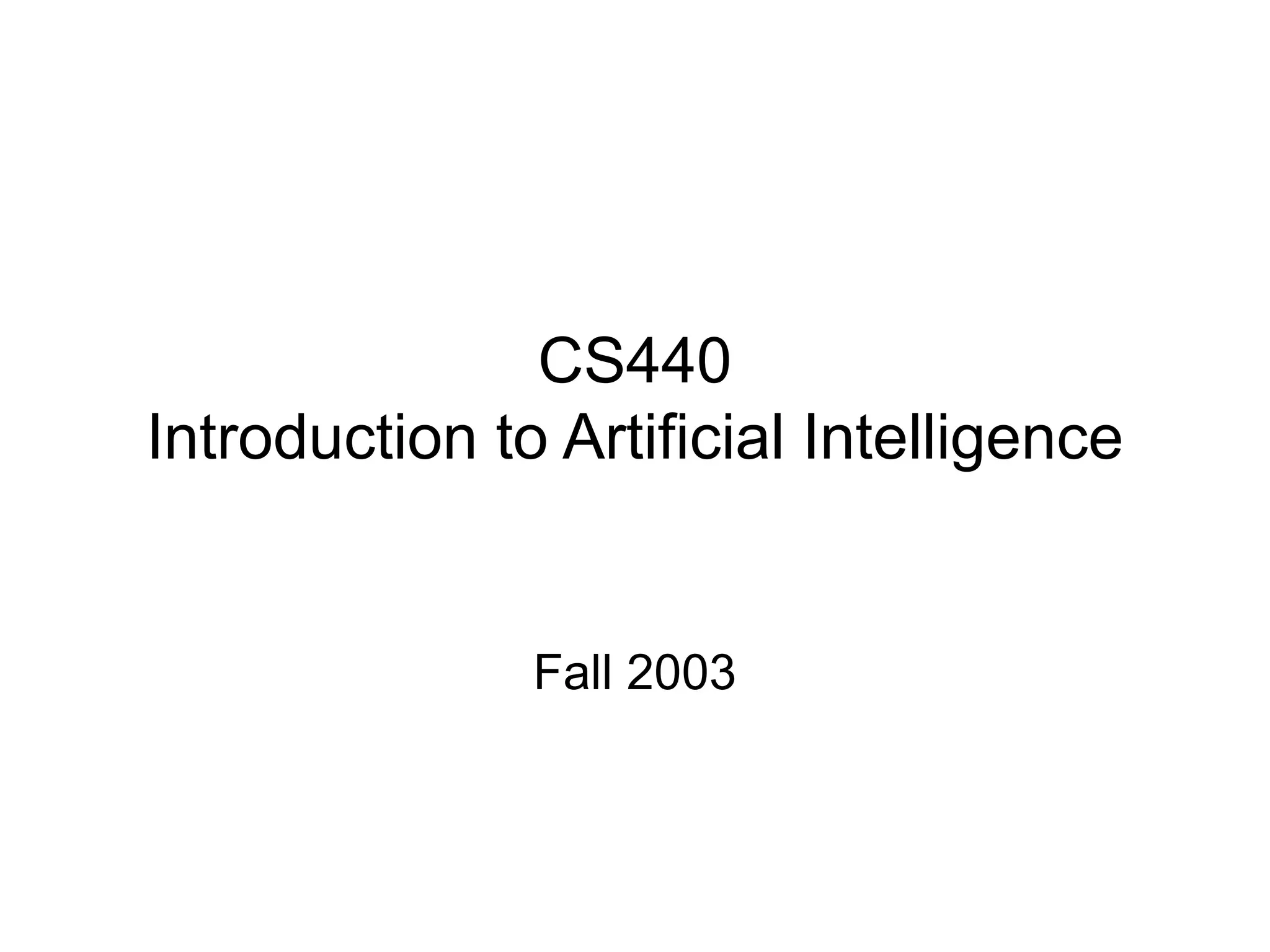
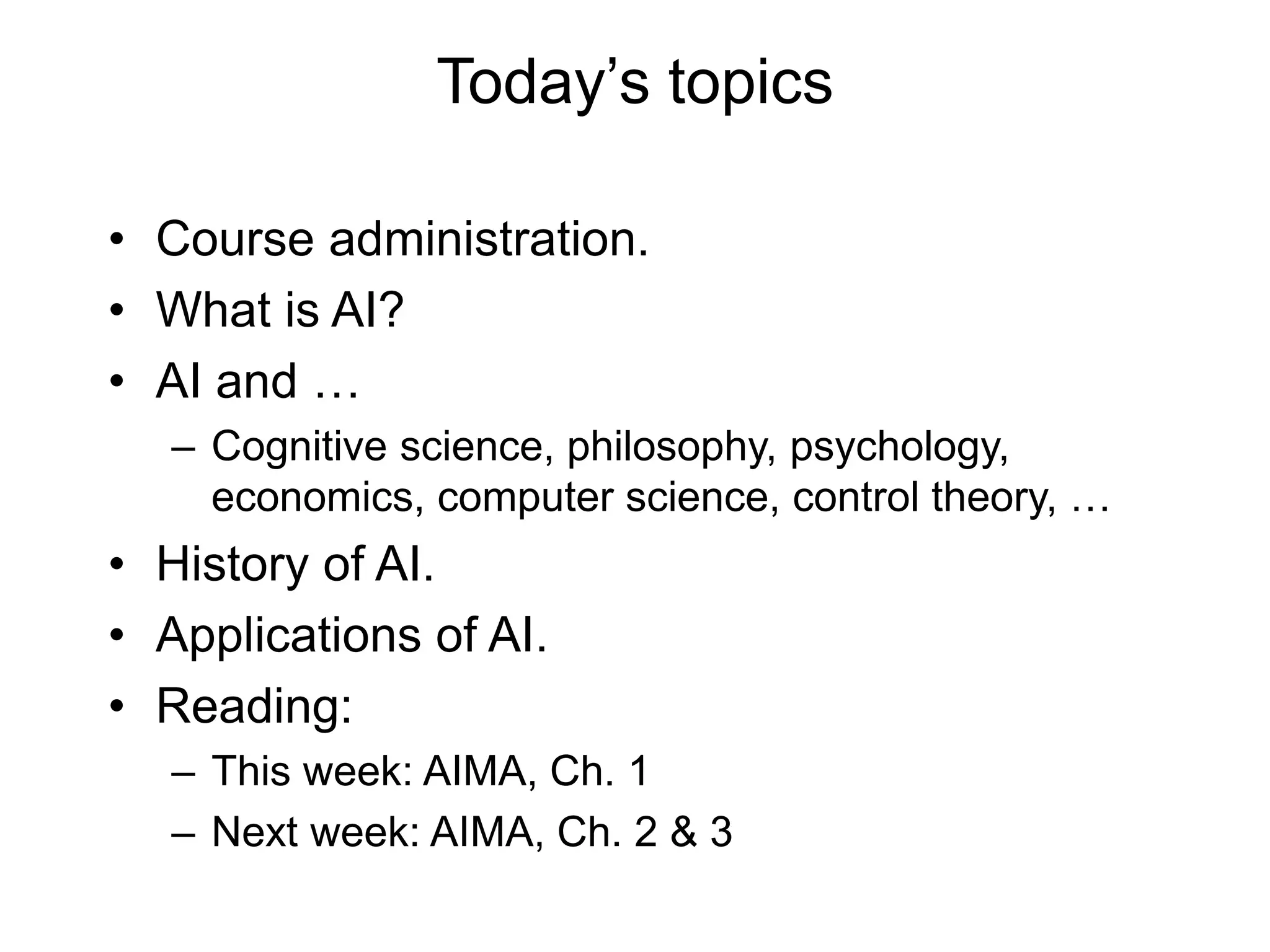
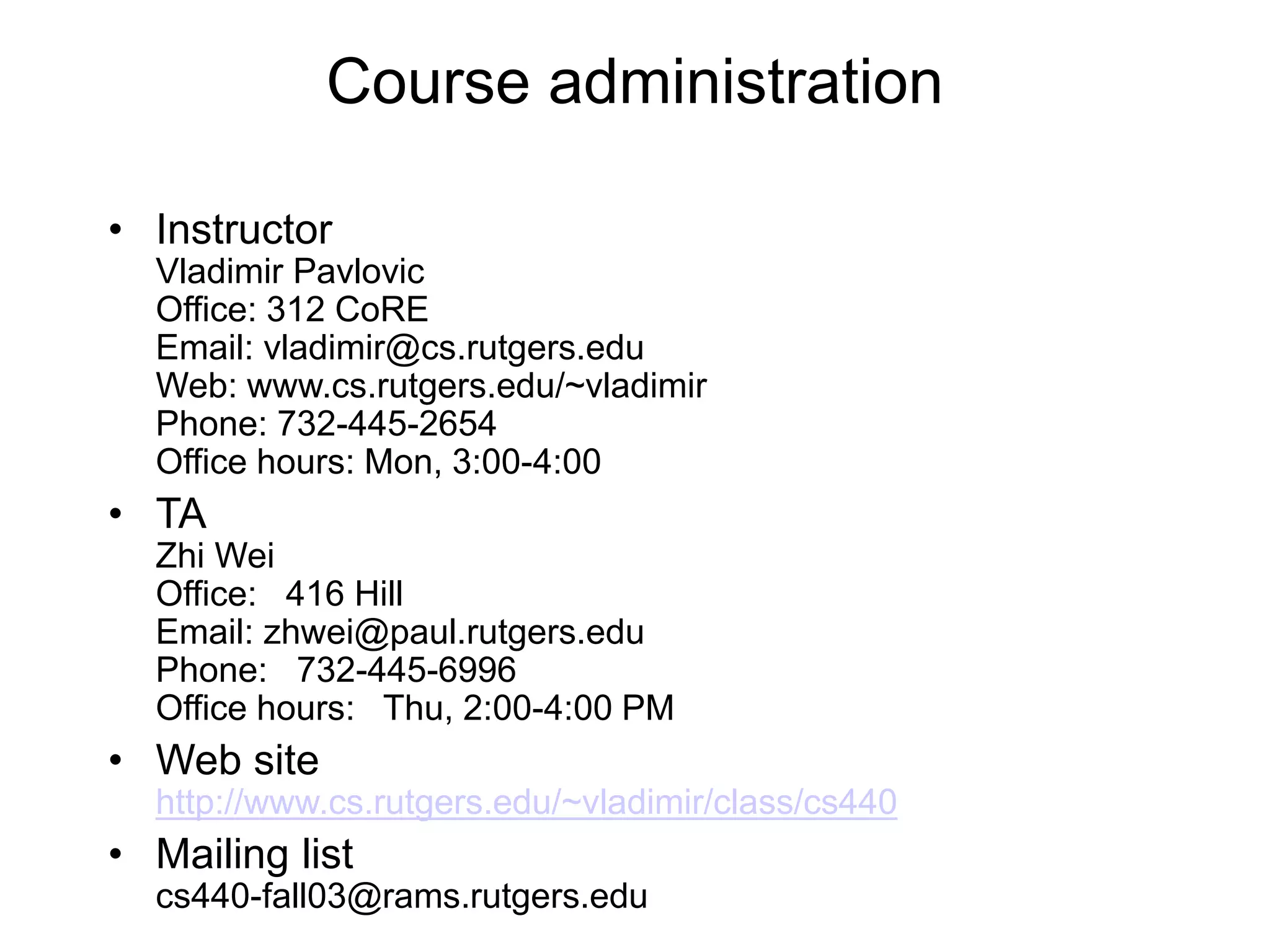
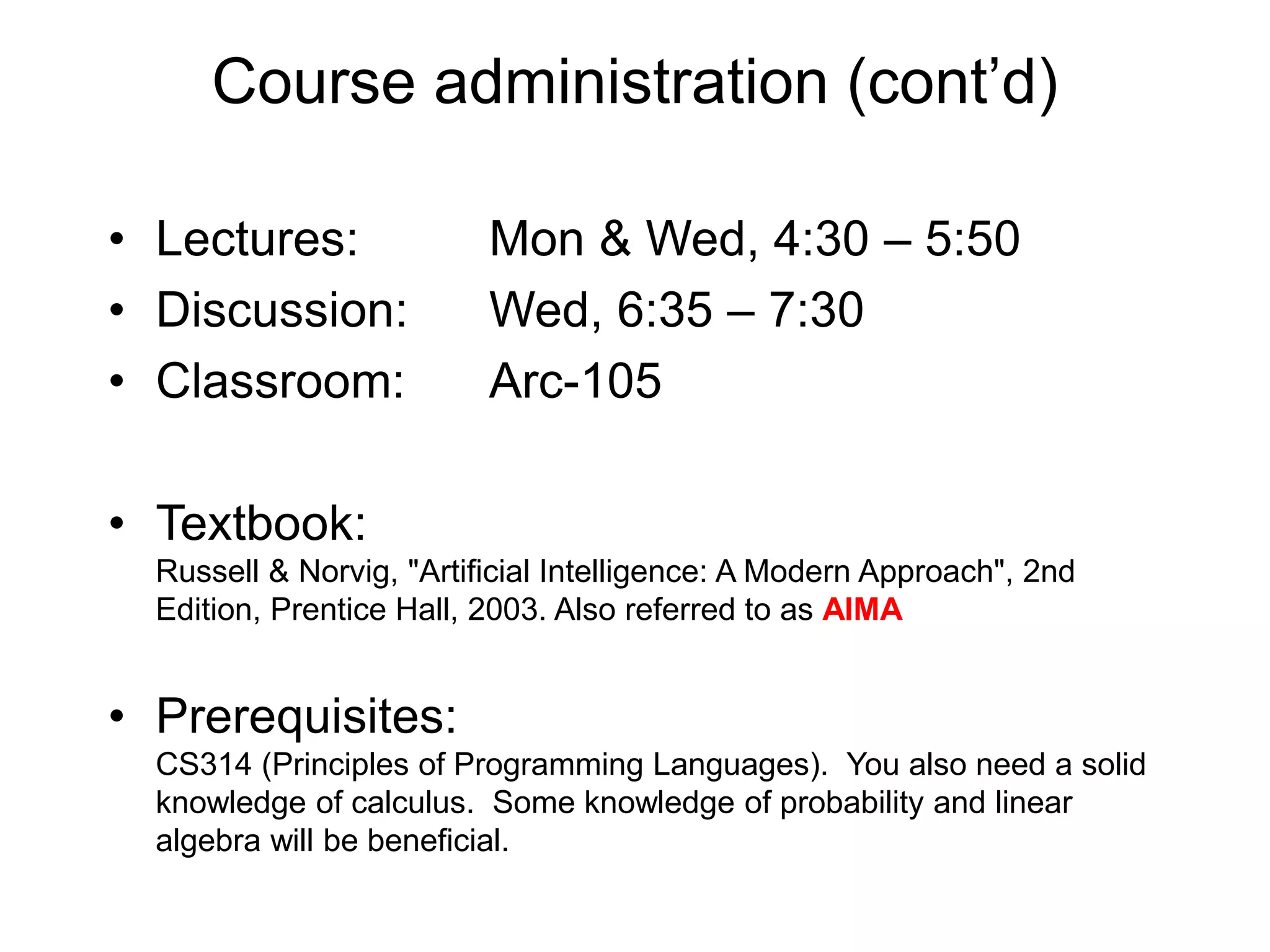
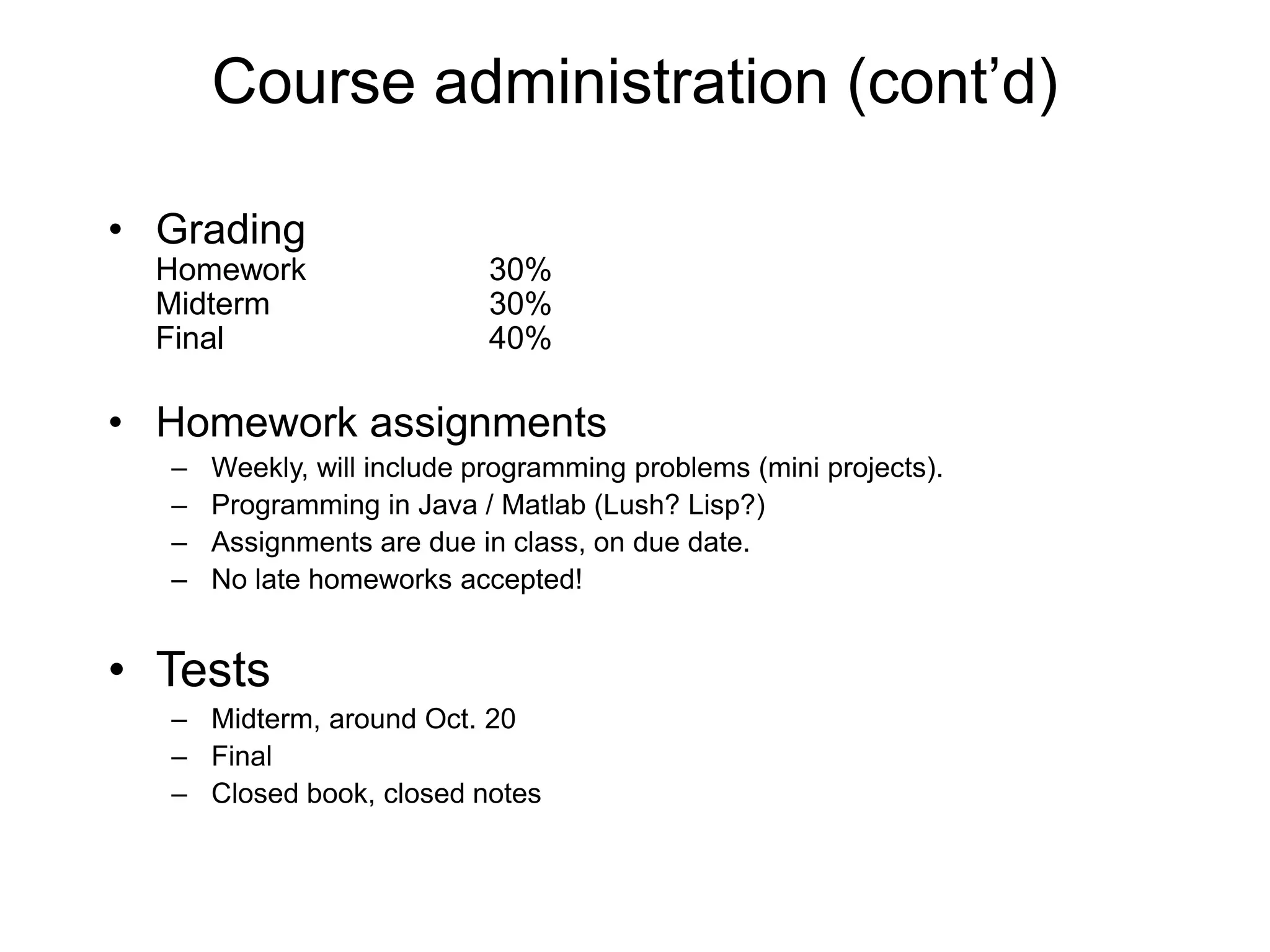
![What is AI?
• What is intelligence?
– “The capacity to learn and solve problems” [Webster
dictionary]
– “The computational part of the ability to achieve goals in the
world. Varying kinds and degrees of intelligence occur in
people, many animals and some machines.” [McCarthy] &
Alice Bot (http://www.alicebot.org/)
– Ability to think and act rationally.
• What are “ingredients” of intelligence?](https://image.slidesharecdn.com/n01-221124045510-9c14b4f7/75/n01-ppt-6-2048.jpg)
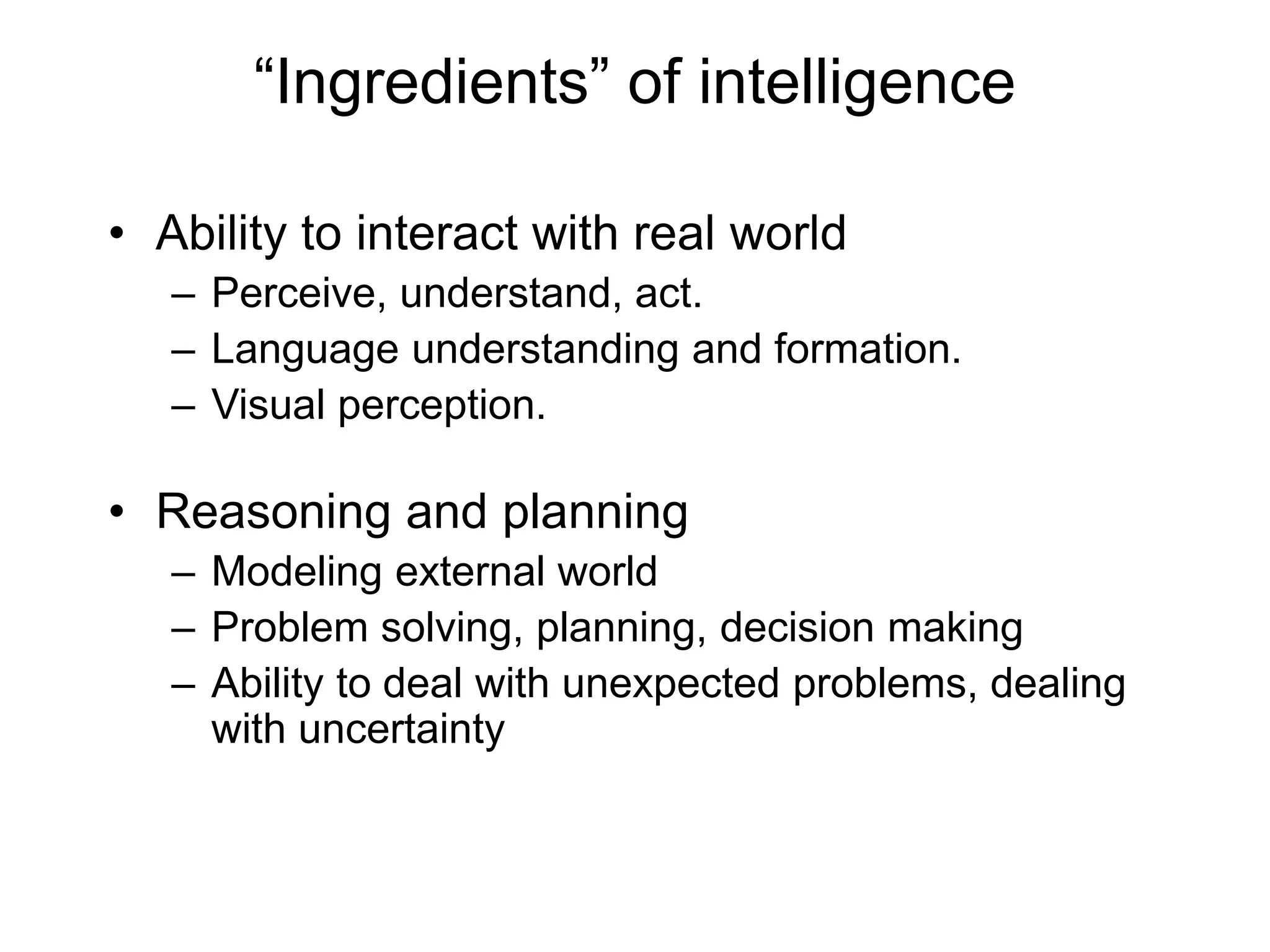
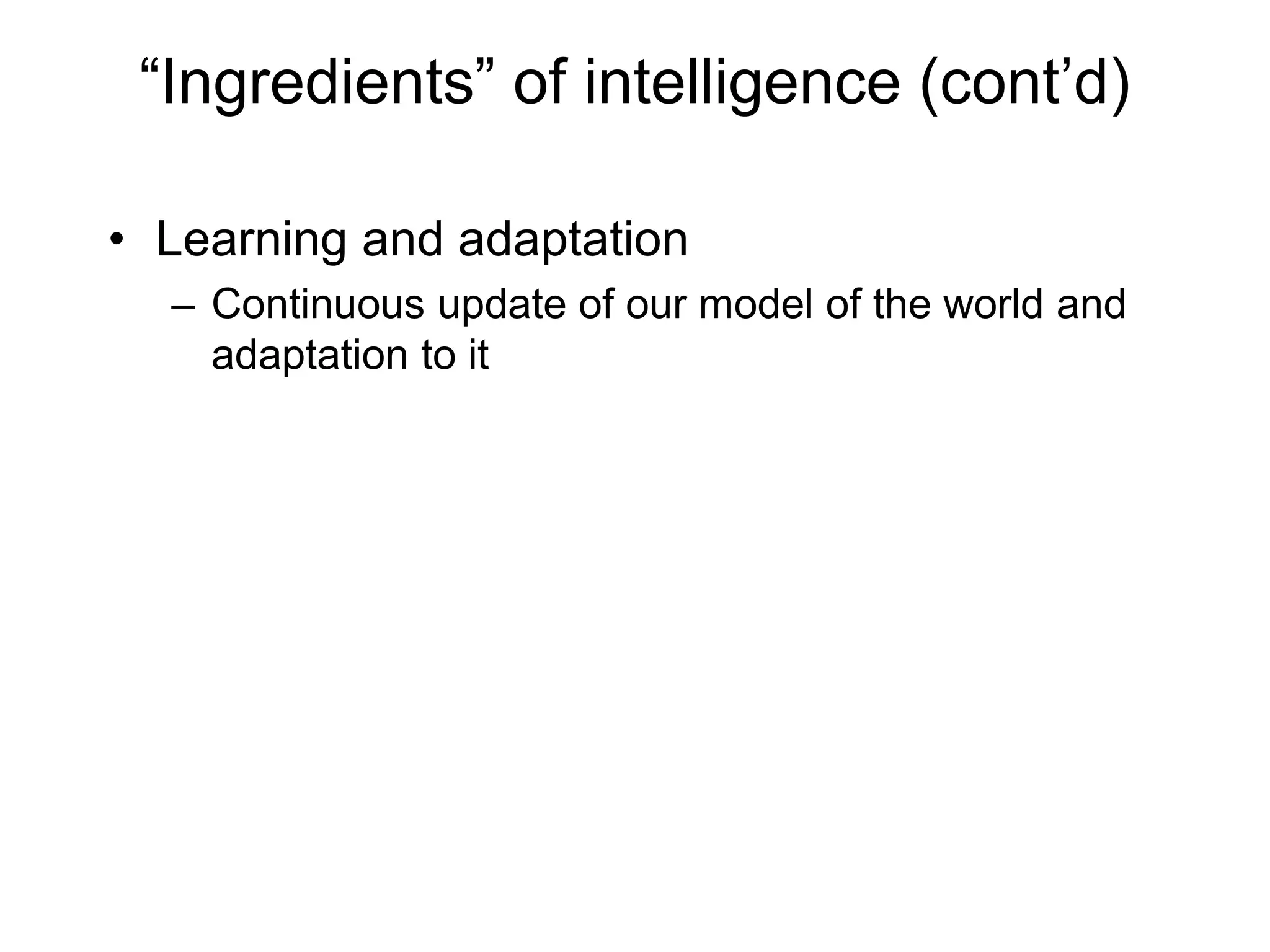
![What is AI?
• A field that focuses on developing techniques to enable computer
systems to perform activities that are considered intelligent (in humans
and other animals). [Dyer]
• The science and engineering of making intelligent machines, especially
intelligent computer programs. It is related to the similar task of using
computers to understand human intelligence, but AI does not have to
confine itself to methods that are biologically observable. [McCarthy]
• The study of how to make computer do things which, at the moment,
people do better. [Rich&Knight]
• The design and study of computer programs that behave intelligently.
[Dean, Allen, & Aloimonos]
• The study of [rational] agents that exist in an environment and perceive
and act. [Russell&Norvig]](https://image.slidesharecdn.com/n01-221124045510-9c14b4f7/75/n01-ppt-9-2048.jpg)
